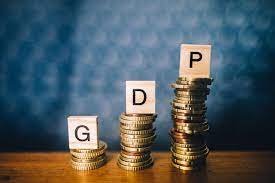
Nigeria’s economy maintained strong momentum in the second quarter of 2025, recording a 4.23 per cent year-on-year growth in Gross Domestic Product (GDP), driven largely by improved crude oil output and resilience across non-oil sectors.
Latest data released by the National Bureau of Statistics (NBS) showed that the Q2 2025 growth rate outpaced the 3.42 per cent recorded in the corresponding quarter of 2024, underlining the impact of reforms in the petroleum sector and a rebound in oil production following months of disruption.
According to the report, crude oil production averaged 1.65 million barrels per day during the quarter, compared with 1.41 million barrels per day in Q2 2024. The improvement reflects sustained government clampdown on oil theft and increased investment in upstream activities. The oil sector consequently expanded by 7.8 per cent, reversing contractions seen in previous quarters.
The non-oil economy, which remains the backbone of Nigeria’s GDP, grew by 3.6 per cent, supported by robust activities in telecommunications, agriculture, trade, and financial services. Analysts noted that while oil provided the headline boost, broad-based resilience in services and agriculture kept the recovery balanced.
“The numbers show that reforms are beginning to yield results,” said a Lagos-based economist, adding that the combination of improved oil receipts and growing digital and service industries has strengthened Nigeria’s medium-term outlook.
However, the NBS cautioned that persistent inflationary pressures, high borrowing costs, and foreign exchange constraints continue to weigh on household consumption and investment. Inflation remains elevated at over 27 per cent, eroding purchasing power despite GDP expansion.
With the new growth figures, Nigeria consolidates its position as Africa’s largest economy, as the government pushes towards its $1 trillion GDP target under the medium-term development plan. Economists believe sustained reforms, particularly in energy, infrastructure, and the financial sector, will be critical to maintain momentum in the second half of 2025.






